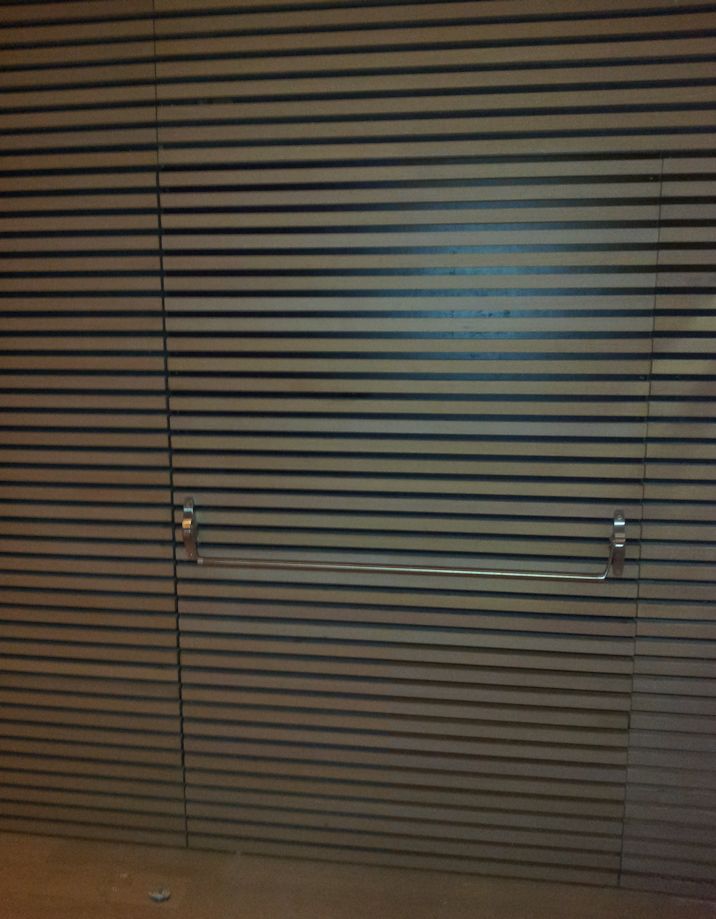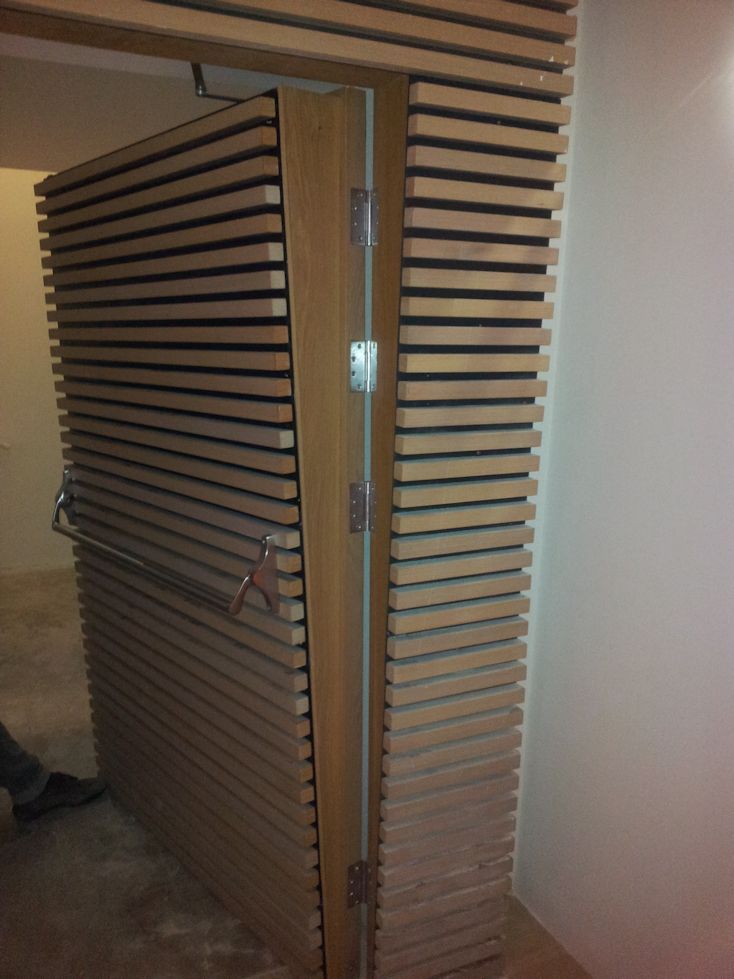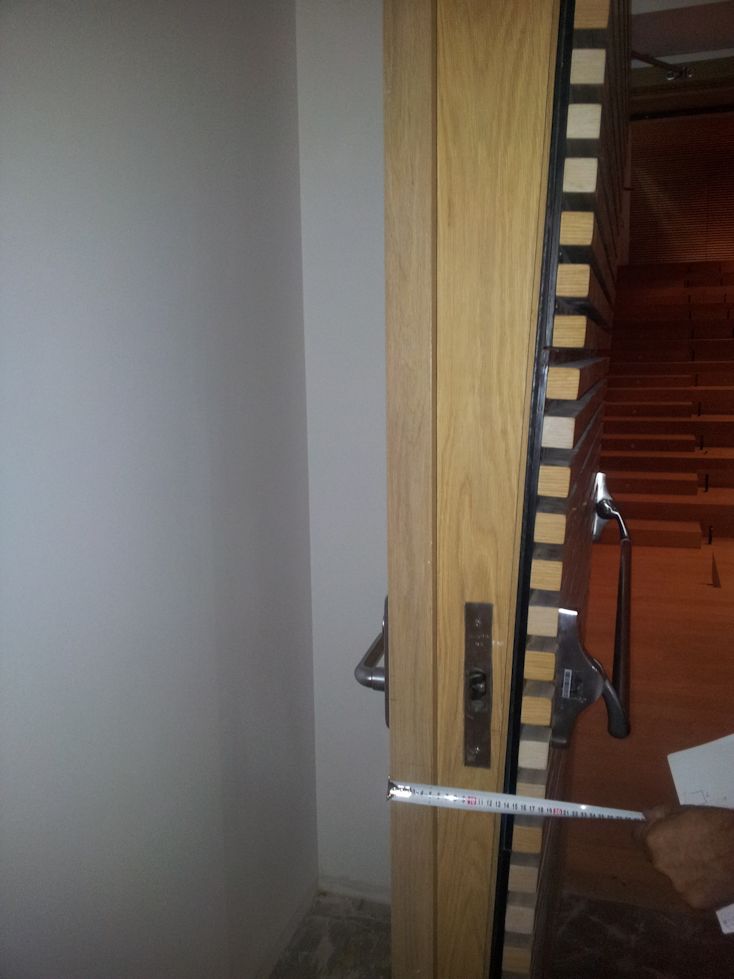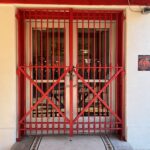I’ve specified hardware for A LOT of doors. Thousands. But I’ve never worked on a door like this one, where the door thickness varied from top to bottom. When you have a door with an unusual thickness, you need to consider the interface between the lever trim/control, the lock body, and the panic hardware, along with the length of the fasteners and cylinder. With a mortise lockset or a mortise panic like this Von Duprin 5575 device, the location of the lock body within the door thickness factors into the equation. For example, if it was a 3″ thick door but the lock body was installed at the push side face of the door, only the connection between the lever and the lock body would need to be addressed. If the lock body was installed at the pull side face of the door, only the connection between the lock body and the panic hardware would need to be addressed. If the lock was centered in the door thickness, both connections would be affected, as below.
If you’re thinking that this door is not visible enough to qualify as an egress door – gold star for the day! 🙂 It’s located in Israel so the code requirements may be different, or the AHJ may have granted a variance for whatever reason, but it appears that the goal was to minimize the appearance of the door and I think they succeeded!
2012 IBC: Means of egress doors shall be readily distinguishable from the adjacent construction and finishes such that the doors are easily recognizable as doors. Mirrors or similar reflecting materials shall not be used on means of egress doors. Means of egress doors shall not be concealed by curtains, drapes, decorations or similar materials.
Thank you to Eyal Bedrik of Entry Systems for the photos!
You need to login or register to bookmark/favorite this content.









Leave A Comment